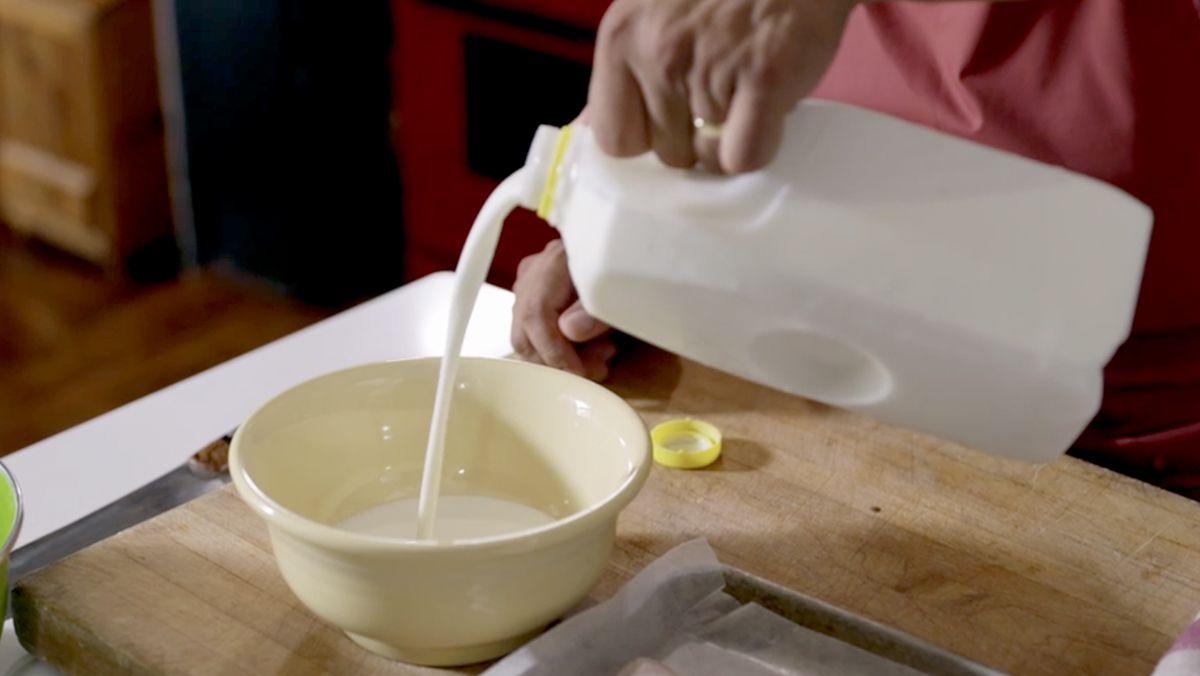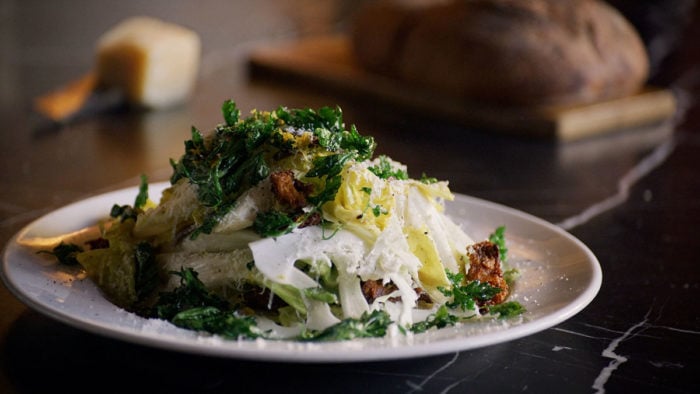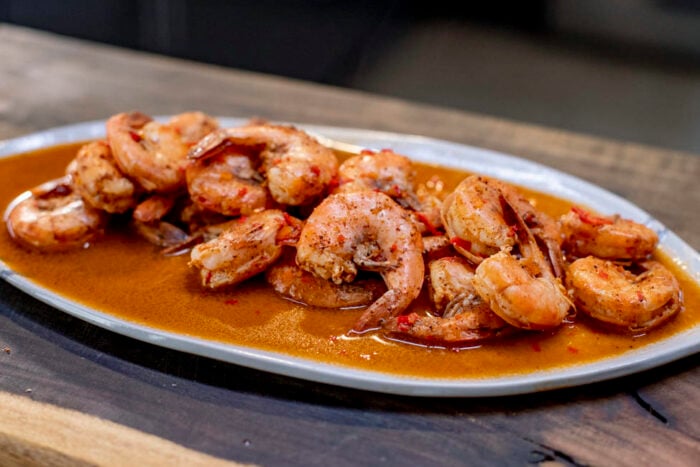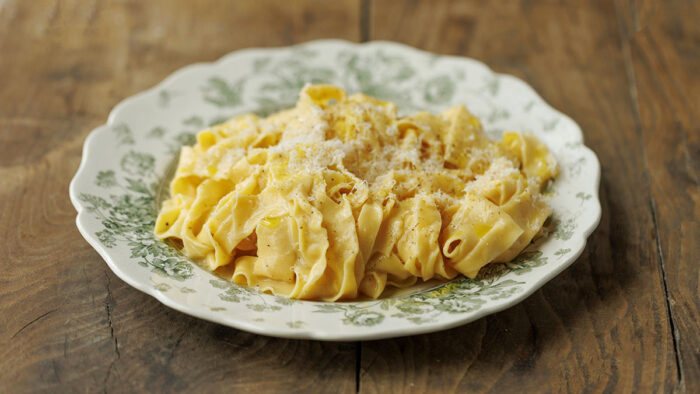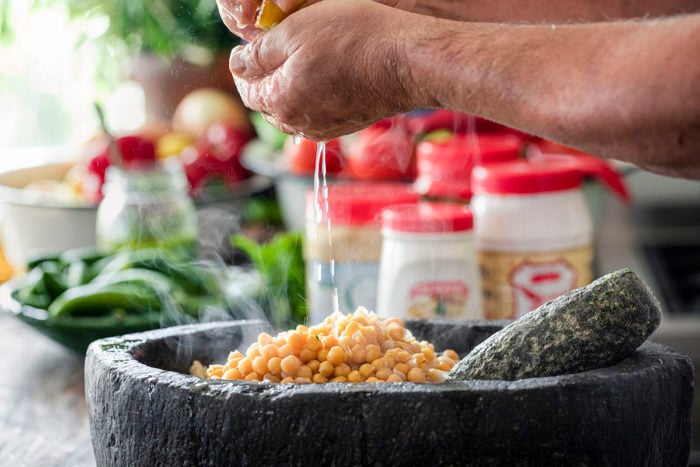
Is YesChef right for me?
Take this quiz to find out.
How to Substitute Buttermilk
Written by the YesChef staff
Share on


Buttermilk is a popular ingredient in both sweet and savory recipes due to its creamy, slightly tangy flavor.
However, milk can’t be used as a substitute in recipes that call for buttermilk because regular dairy milk and buttermilk are too different. Fortunately, there are a number of easy homemade buttermilk substitutes with ingredients you might already have in your refrigerator. They include both dairy alternatives as well as dairy free milk substitutions such as soy milk, oat milk, and almond milk.
Get Access to an Ever-Growing Library of Classes
Every Subscription includes:
- Unlimited Streaming of all Classes
- Watch on your phone, tablet or laptop
- Story-driven Classes, Practical Lessons
- Recipes with Step-by-Step Guidance
- 30-day Satisfaction Guarantee
- New Lessons added all the time
$9.99/mo
Billed annually

What is Buttermilk?
Buttermilk is a fermented dairy beverage made from cow’s milk. Modern buttermilk, which you can either drink by itself or bake with in your home recipes, is pasteurized and homogenized milk that has been cultured. The fermentation process gives buttermilk its unique creamy consistency, its taste, and helps add beneficial bacteria, enzymes, and probiotics to the buttermilk. Probiotics are beneficial bacteria that help maintain a healthy balance of microorganisms in your digestive system – and buttermilk contains lots of them.
In fact, there are two main types of buttermilk. There is the cultured, store-bought buttermilk, made from pasteurized low-fat or skim milk that has been inoculated with a lactic acid culture that creates a mildly sour, tangy flavor. Then there is traditional buttermilk, an old-fashioned method of making buttermilk, which is a by-product of the butter-making process and is made from the liquid that remains after churning cream into butter. Traditional buttermilk is thick, sour, and tangy. In the United States, the kind of buttermilk you will find at your local grocery store, however, is cultured buttermilk, as traditional buttermilk can generally be bought only through local dairy farmers.
In fact, there are two main types of buttermilk. There is the cultured, store-bought buttermilk, made from pasteurized low-fat or skim milk that has been inoculated with a lactic acid culture that creates a mildly sour, tangy flavor. Then there is traditional buttermilk, an old-fashioned method of making buttermilk, which is a by-product of the butter-making process and is made from the liquid that remains after churning cream into butter. Traditional buttermilk is thick, sour, and tangy. In the United States, the kind of buttermilk you will find at your local grocery store, however, is cultured buttermilk, as traditional buttermilk can generally be bought only through local dairy farmers.
Common Dishes with Buttermilk
Buttermilk is used in a variety of dishes, such as in baking recipes for pancakes, waffles, biscuits, cakes, muffins, and scones. It appears in recipes for various dressings, sauces, and marinades for meats like pork and chicken and all sorts of vegetables. And it can be used to make all kinds of foods, from creamy, flavorful ice cream to crispy and delicious fried chicken.
In a YesChef lesson on his special recipe for Shallow-Fry Fried Chicken, chef Edward Lee explains why he uses buttermilk to make his fried chicken. The reason is that buttermilk contains an acidity to it which helps tenderize and break down his chicken while also adding some flavor. Which begs the question: If you aren’t going to use buttermilk for your fried chicken recipe or whatever dish it is you are cooking, then what can you use instead? And why can’t you just use plain milk?
In a YesChef lesson on his special recipe for Shallow-Fry Fried Chicken, chef Edward Lee explains why he uses buttermilk to make his fried chicken. The reason is that buttermilk contains an acidity to it which helps tenderize and break down his chicken while also adding some flavor. Which begs the question: If you aren’t going to use buttermilk for your fried chicken recipe or whatever dish it is you are cooking, then what can you use instead? And why can’t you just use plain milk?
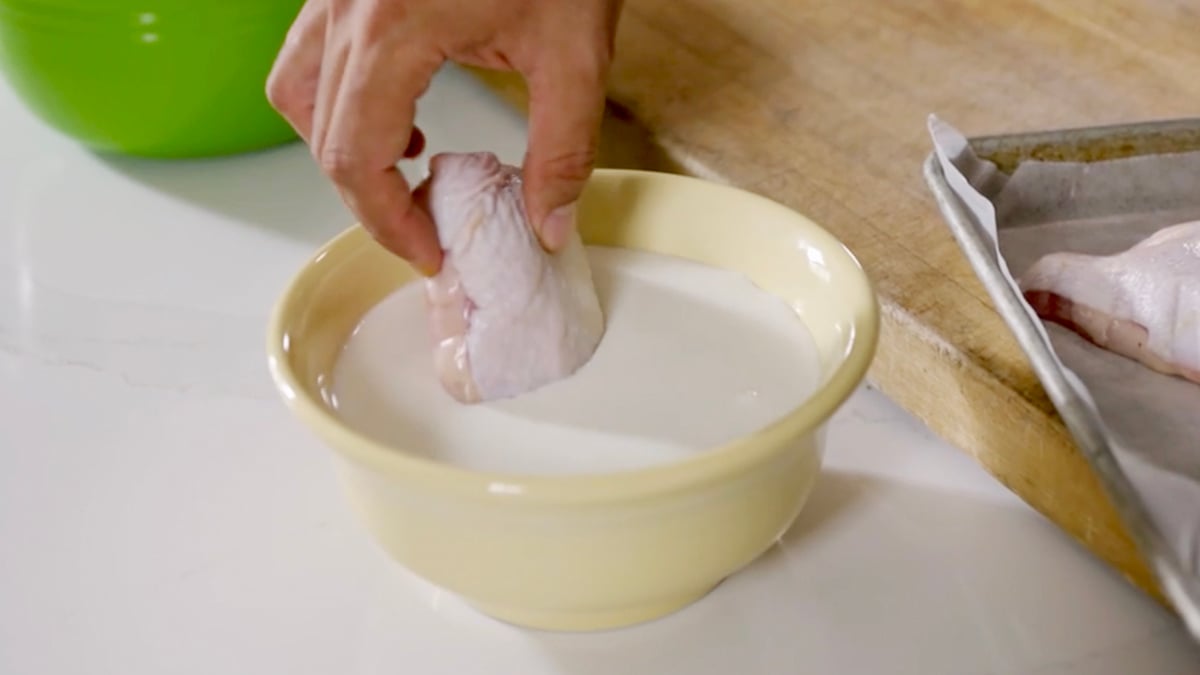
How are Milk and Buttermilk Different?
Why can’t regular dairy milk just be used as a buttermilk substitute? For one thing, dairy milk has less acidity to it than buttermilk. Acidity, when it’s combined with baking soda, is great for baking because the lactic acid contained in buttermilk helps lighten baked goods. And as Edward explains in his lesson fried chicken, acidity is important to his fried chicken recipe because it makes his chicken more tender and flavorful. Standard dairy milk and buttermilk are different in other ways, too. Buttermilk is creamer and has a thicker consistency than standard dairy milk, buttermilk has a tangier taste, and buttermilk is higher in protein.
Why Substitute Buttermilk?
The most common reason to substitute buttermilk is because you don’t have any buttermilk in your refrigerator – either because you ran out of it, or because you never buy buttermilk to begin with. But if you have a recipe you really want to make that calls for buttermilk, there are some great buttermilk substitutes you can use instead. In fact, many experienced home chefs prefer making their own buttermilk substitute rather than buying it in the grocery store because they can tailor it to their own cooking needs. But whatever your own reason, below are some great buttermilk substitutes you can quickly make in your own kitchen.
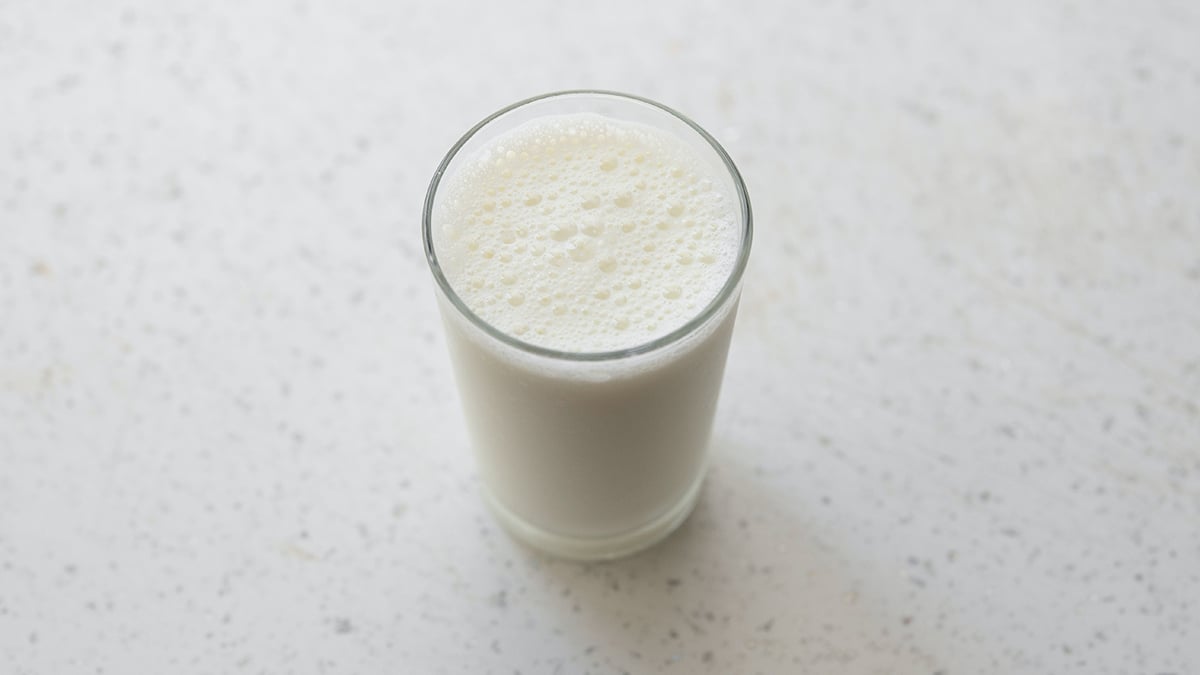
Great Buttermilk Substitutes
The following recipes work great as buttermilk substitutes for your cakes, cookies, marinades, fried chicken and more. But pay close attention to the ratios; to make a proper buttermilk substitute you will want to use the right proportions of each replacement ingredient. Just keep in mind that for dairy-based substitutes, you will need regular milk on hand, ideally 2 percent milk or whole milk.
In the following recipes, you will be combining the regular milk with a second ingredient, which will have the necessary acidity in it. Also included below are some excellent plant-based, non-dairy homemade buttermilk substitutes. Each of these substitutes for buttermilk, both dairy and non-dairy alike, you will generally be able to refrigerate in an airtight container for about a week before they start losing their freshness.
Plain Yogurt and Milk: A combination of plain yogurt and whole milk or two-percent milk is a great homemade buttermilk substitute. Just combine ¾ cup of plain yogurt with ¼ cup of milk.
Sour Cream and Milk: You can also use sour cream with milk to substitute for buttermilk. To make this recipe, combine ¾ cup of sour cream with ¼ cup of milk.
White Vinegar and Milk: Vinegar is also another ingredient you probably have at home that you can mix with milk and use instead of buttermilk. For this recipe, simply combine 1 tablespoon of white vinegar with 1 cup of milk. Let the mixture sit for about 10 minutes before using it. This will allow the milk and vinegar to curdle and create the buttermilk substitute.
Lemon Juice and Milk: Another easy buttermilk substitute for your recipes is a combination of lemon juice and milk. For this recipe, just combine 1 tablespoon of fresh lemon juice with 1 cup of milk.
Cream of Tartar and Milk: For another superb homemade buttermilk substitute, you can mix milk with cream of tartar. The amount required for this recipe is ½ tablespoon of cream of tartar with 1 cup of milk.
Buttermilk Powder and Water: There is also the option of buying buttermilk powder at the supermarket. This powdered, dehydrated buttermilk is typically combined with water or milk. The product’s packaging will specify what ratio to use for your buttermilk substitute. But a common ratio will be to combine ¼ cup powdered buttermilk with 1 cup of water.
Lactose-Free Milk and Lemon Juice or Vinegar: Buttermilk isn’t as high as whole milk or two-percent milk in lactose, but here’s one way to create a completely lactose-free homemade buttermilk substitute: Stir 1 cup of lactose-free milk with 1 tablespoon of lemon juice or vinegar.
Coconut Milk and Vinegar or Lemon Juice: One excellent dairy-free buttermilk substitute is to combine coconut milk with an acid. This recipe calls for you to mix 1 tablespoon of white vinegar or lemon juice with 1 cup of unsweetened coconut milk.
Almond Milk and Vinegar or Lemon Juice: You can also mix an acid with almond milk to make a dairy-free substitute for buttermilk. To make this recipe, use 1 tablespoon of vinegar or lemon juice with 1 cup of unsweetened almond milk. You can also use apple cider vinegar instead of white vinegar as well.
Cashew Milk and Vinegar or Lemon Juice: Cashew milk can also be combined with an acid to make a great dairy-free buttermilk substitute. This recipe calls for 1 tablespoon of vinegar or lemon juice combined with 1 cup of unsweetened cashew milk.
Soy Milk and Vinegar or Lemon Juice: For a soy-based buttermilk substitute, you can use the same ratio as applied to other dairy and non-dairy recipes for buttermilk substitutes: 1 tablespoon of unsweetened soy milk combined with 1 tablespoon of lemon juice or vinegar.
Oat Milk and Vinegar or Lemon Juice: Another effective vegan buttermilk substitution is to combine oat milk with an acid. Just use the same ratio as you would with the other plant-based milks above: mix one cup oat milk with 1 tablespoon of white vinegar or lemon juice.
Vegan Sour Cream and Water: For this dairy-free recipe for a homemade buttermilk substitute, stir together ½ cup of vegan sour cream with ½ cup of water.
Tofu & Water with Lemon Juice or Vinegar: Combining soft, silken tofu and water with an acid is another plant-based recipe for an easy buttermilk substitute. In a blender, combine ¼ cup tofu with ¾ cup water along with 1 tablespoon of lemon juice or vinegar.
In the following recipes, you will be combining the regular milk with a second ingredient, which will have the necessary acidity in it. Also included below are some excellent plant-based, non-dairy homemade buttermilk substitutes. Each of these substitutes for buttermilk, both dairy and non-dairy alike, you will generally be able to refrigerate in an airtight container for about a week before they start losing their freshness.
Plain Yogurt and Milk: A combination of plain yogurt and whole milk or two-percent milk is a great homemade buttermilk substitute. Just combine ¾ cup of plain yogurt with ¼ cup of milk.
Sour Cream and Milk: You can also use sour cream with milk to substitute for buttermilk. To make this recipe, combine ¾ cup of sour cream with ¼ cup of milk.
White Vinegar and Milk: Vinegar is also another ingredient you probably have at home that you can mix with milk and use instead of buttermilk. For this recipe, simply combine 1 tablespoon of white vinegar with 1 cup of milk. Let the mixture sit for about 10 minutes before using it. This will allow the milk and vinegar to curdle and create the buttermilk substitute.
Lemon Juice and Milk: Another easy buttermilk substitute for your recipes is a combination of lemon juice and milk. For this recipe, just combine 1 tablespoon of fresh lemon juice with 1 cup of milk.
Cream of Tartar and Milk: For another superb homemade buttermilk substitute, you can mix milk with cream of tartar. The amount required for this recipe is ½ tablespoon of cream of tartar with 1 cup of milk.
Buttermilk Powder and Water: There is also the option of buying buttermilk powder at the supermarket. This powdered, dehydrated buttermilk is typically combined with water or milk. The product’s packaging will specify what ratio to use for your buttermilk substitute. But a common ratio will be to combine ¼ cup powdered buttermilk with 1 cup of water.
Lactose-Free Milk and Lemon Juice or Vinegar: Buttermilk isn’t as high as whole milk or two-percent milk in lactose, but here’s one way to create a completely lactose-free homemade buttermilk substitute: Stir 1 cup of lactose-free milk with 1 tablespoon of lemon juice or vinegar.
Coconut Milk and Vinegar or Lemon Juice: One excellent dairy-free buttermilk substitute is to combine coconut milk with an acid. This recipe calls for you to mix 1 tablespoon of white vinegar or lemon juice with 1 cup of unsweetened coconut milk.
Almond Milk and Vinegar or Lemon Juice: You can also mix an acid with almond milk to make a dairy-free substitute for buttermilk. To make this recipe, use 1 tablespoon of vinegar or lemon juice with 1 cup of unsweetened almond milk. You can also use apple cider vinegar instead of white vinegar as well.
Cashew Milk and Vinegar or Lemon Juice: Cashew milk can also be combined with an acid to make a great dairy-free buttermilk substitute. This recipe calls for 1 tablespoon of vinegar or lemon juice combined with 1 cup of unsweetened cashew milk.
Soy Milk and Vinegar or Lemon Juice: For a soy-based buttermilk substitute, you can use the same ratio as applied to other dairy and non-dairy recipes for buttermilk substitutes: 1 tablespoon of unsweetened soy milk combined with 1 tablespoon of lemon juice or vinegar.
Oat Milk and Vinegar or Lemon Juice: Another effective vegan buttermilk substitution is to combine oat milk with an acid. Just use the same ratio as you would with the other plant-based milks above: mix one cup oat milk with 1 tablespoon of white vinegar or lemon juice.
Vegan Sour Cream and Water: For this dairy-free recipe for a homemade buttermilk substitute, stir together ½ cup of vegan sour cream with ½ cup of water.
Tofu & Water with Lemon Juice or Vinegar: Combining soft, silken tofu and water with an acid is another plant-based recipe for an easy buttermilk substitute. In a blender, combine ¼ cup tofu with ¾ cup water along with 1 tablespoon of lemon juice or vinegar.
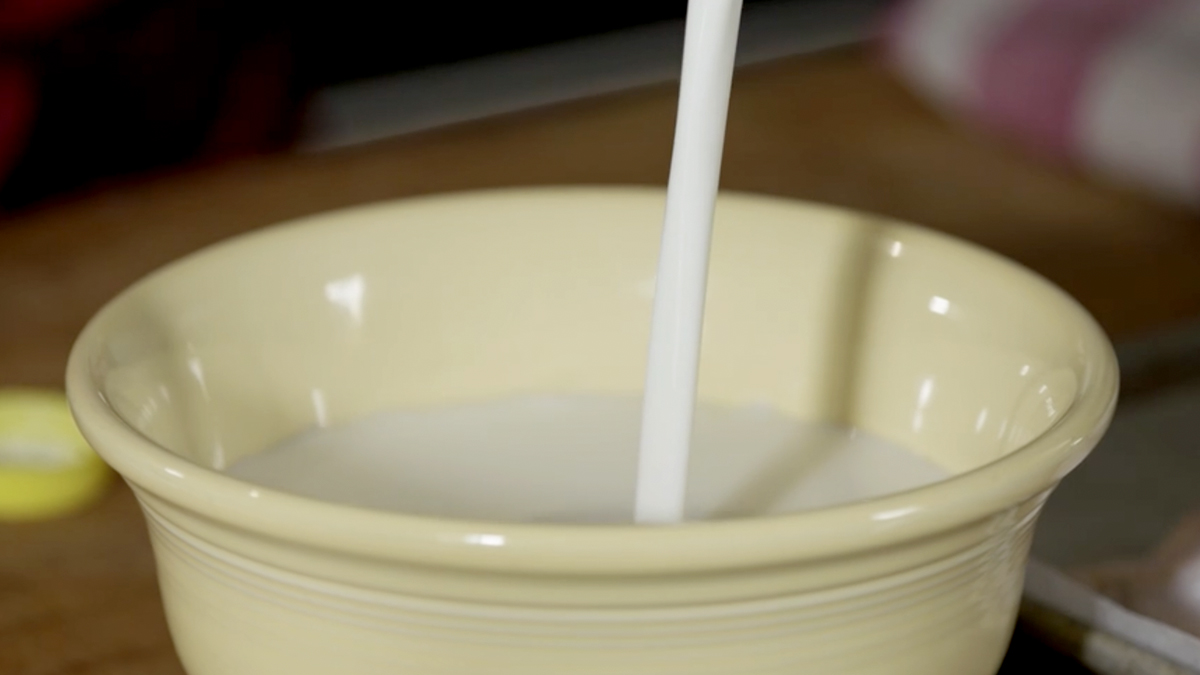
Conclusion
Whether you’re about to make fresh baked goods, a special sauce for your dinner entree, some delicious salad dressings, or some crispy homemade fried chicken, there are a whole variety of great replacements for buttermilk – dairy-based and otherwise – if you don’t have any buttermilk handy and buttermilk is required for your delicious recipes. And with just a few simple ingredients, you can make your own buttermilk substitute and enjoy the same creamy, slightly tangy flavor in your recipes without skipping a beat.
Shallow-fry Fried Chicken
Serves:
|
Hands-on:
|
Total:
Ingredients
Recipe


Edward Lee
James Beard Award winning writer and best-selling cookbook author Edward Lee takes viewers from the farm to his restaurants and home in Louisville, Kentucky and teaches lessons on his beloved dishes including Fried Chicken with Gochujang Sauce, Oysters and Grits, Cabbage-Steamed Fish, and more.
More Articles
7 Tips for Cooking the Perfect Steak Every Time
December 20, 2021
Bucatini Carbonara
September 18, 2023
Bucatini Carbonara
September 19, 2023
5 Healthy Lunch Ideas
April 10, 2023
Hummus Mezze
December 7, 2021
